This post may contain affiliate links. Please read our disclosure policy.
How to make simit (aka Turkish bagel) at home with just 6 ingredients (vegan) – a delicious, sesame-crusted Turkish bread recipe perfect for a breakfast spread, sandwich, or snack!

Turkish simit (also referred to as Turkish bagel or Gevrek) is a sesame-crusted bread that lies somewhere between a bagel and a soft pretzel. The sesame-crusted bread is a twisted ring-shaped, golden brown, and crusty on the outside with a tender, fluffy interior – unlike bagels it’s not boiled before baking and has a softer interior texture.
In Turkey, it is sold on street corners and is very popular street food and addition to a breakfast table with cheese, jams, fresh vegetables, etc.
In London, I was lucky to have access to a very popular Turkish bakery chain. However, since leaving London, I’ve lost my simit fix and decided to take to my kitchen instead. Within the last few months, I’ve already tackled New-York style bagels, Turkish Ramadan pide (flatbread), and Middle Eastern manakish, and pita bread (among several other bread recipes).

In the same way that pretzels are made uniquely “pretzel-like” by poaching in a liquid with baking soda for that crust and flavor, Turkish simit is dipped in a mixture of diluted molasses (with water) which helps with the color of the simit bread and also adds a very slight sweetness that’s subtle but definitely adds that something extra.
Best of all, this simit recipe requires just 6 ingredients – and that includes water and salt!
Want to save this recipe?
The Ingredients
The simit bread

- Flour: to make a traditional simit, it’s important to use a high-protein flour of at least 12% protein (look out for flour labeled ‘strong flour’ and the % will be listed on the label) – it provides that classic ‘bagel-like’ flavor and texture. If you’re unable to find any, then you can use plain white flour – which is what I did for this recipe. You could also use a combination of white and wholewheat flour.
- Yeast: you can use fresh, dry, or instant yeast (I used dried). If you use active dry yeast, there’s no need to activate the yeast (yay for time-saving!).
Note: If you want to use a different type of yeast – to use instant yeast, then use 1/4 of the amount stated of the fresh yeast; to use dry yeast, then use 1/2 the amount stated.
I.e., if needing 100g fresh, then use 50g dry, or 25g instant.
- Salt: just a bit, to add flavor to the simit bread.
- Lukewarm water: using tap water is fine (if you can where you’re from) – but feel free to use distilled. It needs to be warm without being too hot – otherwise it can kill the yeast.
The Coating & Toppings
- Grape molasses: you could alternatively use malt syrup, pekmez (available in some Turkish grocery stores). I’ve even once tried it with honey – it wasn’t the same flavor profile but it worked. I haven’t tried it with other molasses (like pomegranate molasses or fig molasses) – as they’re not as sweet, you may want to add a little extra sugar to the dough or syrup to the molasses mixture.
- Hot water: it’s fine to use tap water, it’s used to dilute the molasses.
- Flour: this isn’t always added, however, a spoonful or two of flour (same flour as the bread) helps the molasses mixture to adhere better to the exterior of the simit.
- Sesame seeds: you can’t make a simit without LOTS of sesame seeds!
How To Make Turkish Simit
Step 1: Prepare the ingredients
First, combine the yeast with lukewarm water, mix well, and set aside for several minutes to allow the yeast to activate.

Meanwhile prepare a large dish of sesame seeds, for dipping. In a separate bowl (big enough to lay the simit in), combine the grape molasses, water, and (optionally) flour and mix well until there are no lumps.
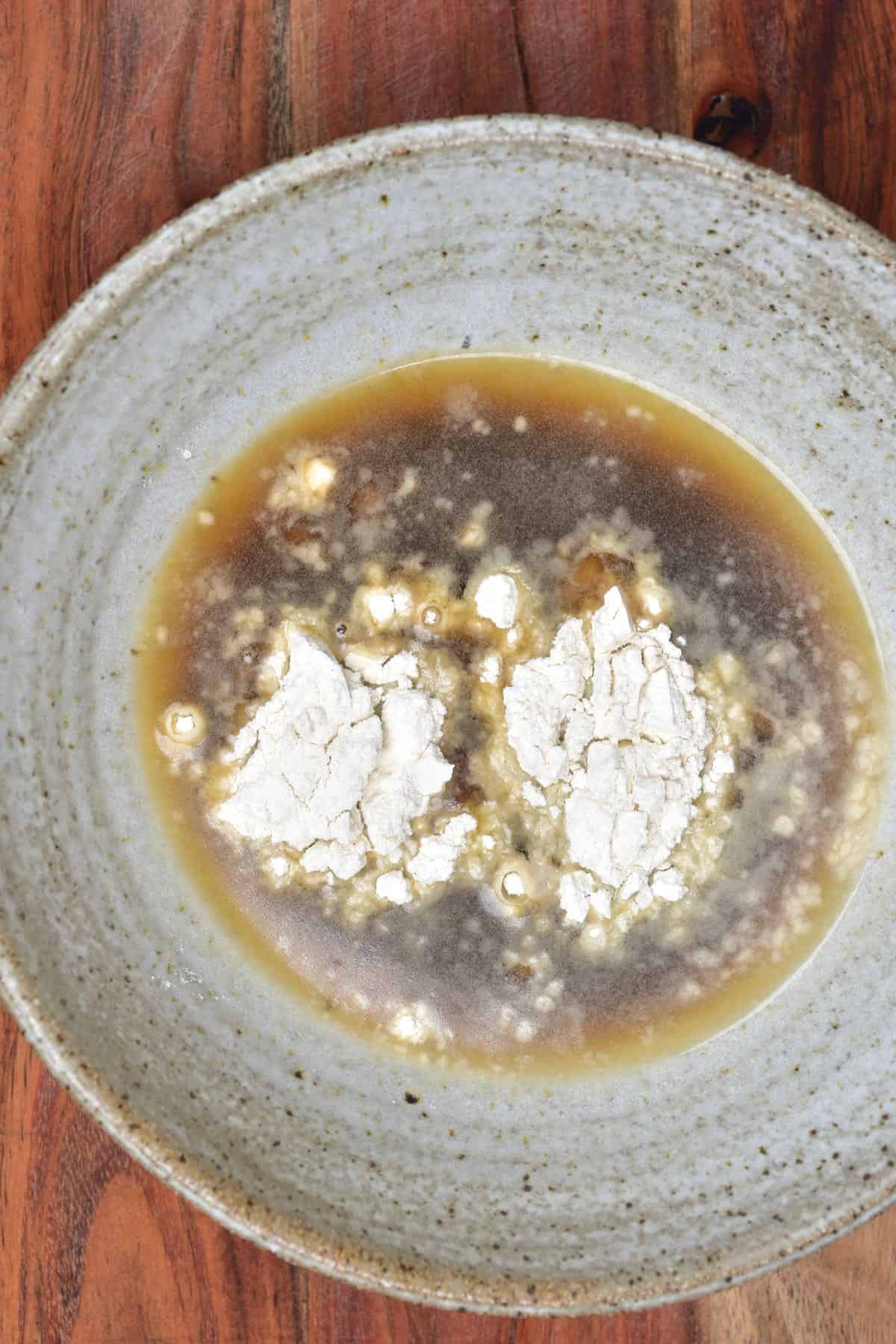
Step 2: Prepare the dough and rest it
Then, combine the flour, salt, and yeast mixture and mix well with a spoon into a crumbly dough.
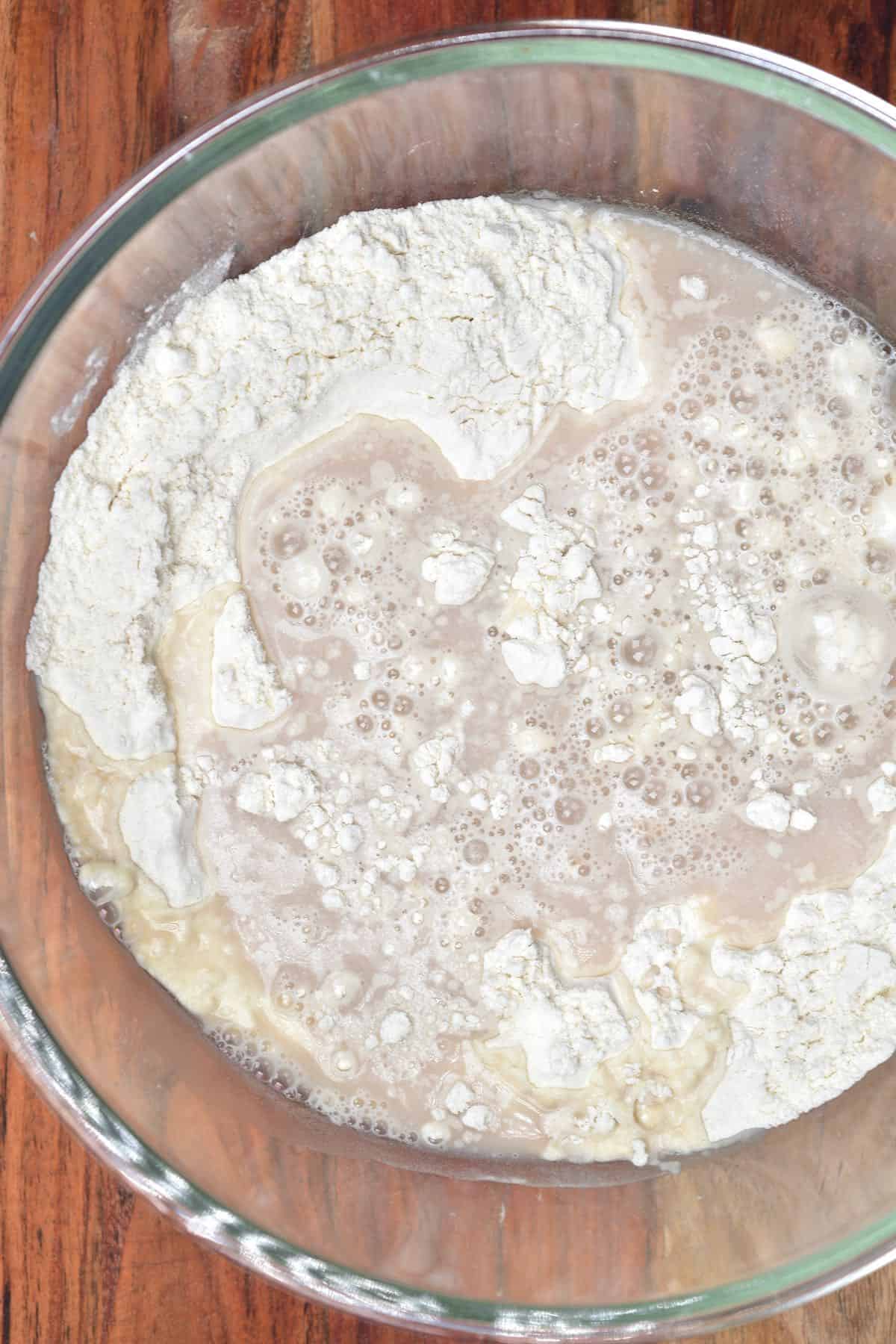
Knead the dough for around 10 minutes, until you have a smooth elastic dough. You could also do this process in a stand mixer for a few minutes less.

Place the dough back in a bowl (lightly oil it if preferred), cover with a kitchen towel, and set aside in a warm area to rise for an hour until it doubles in size.

Step 3: Shape the simit
Remove the dough from the bowl, knock some air out of it and then divide the mixture into 14 equal pieces. To get these fully accurate, weigh them. Mine were 55g (~2 ounces) per piece.
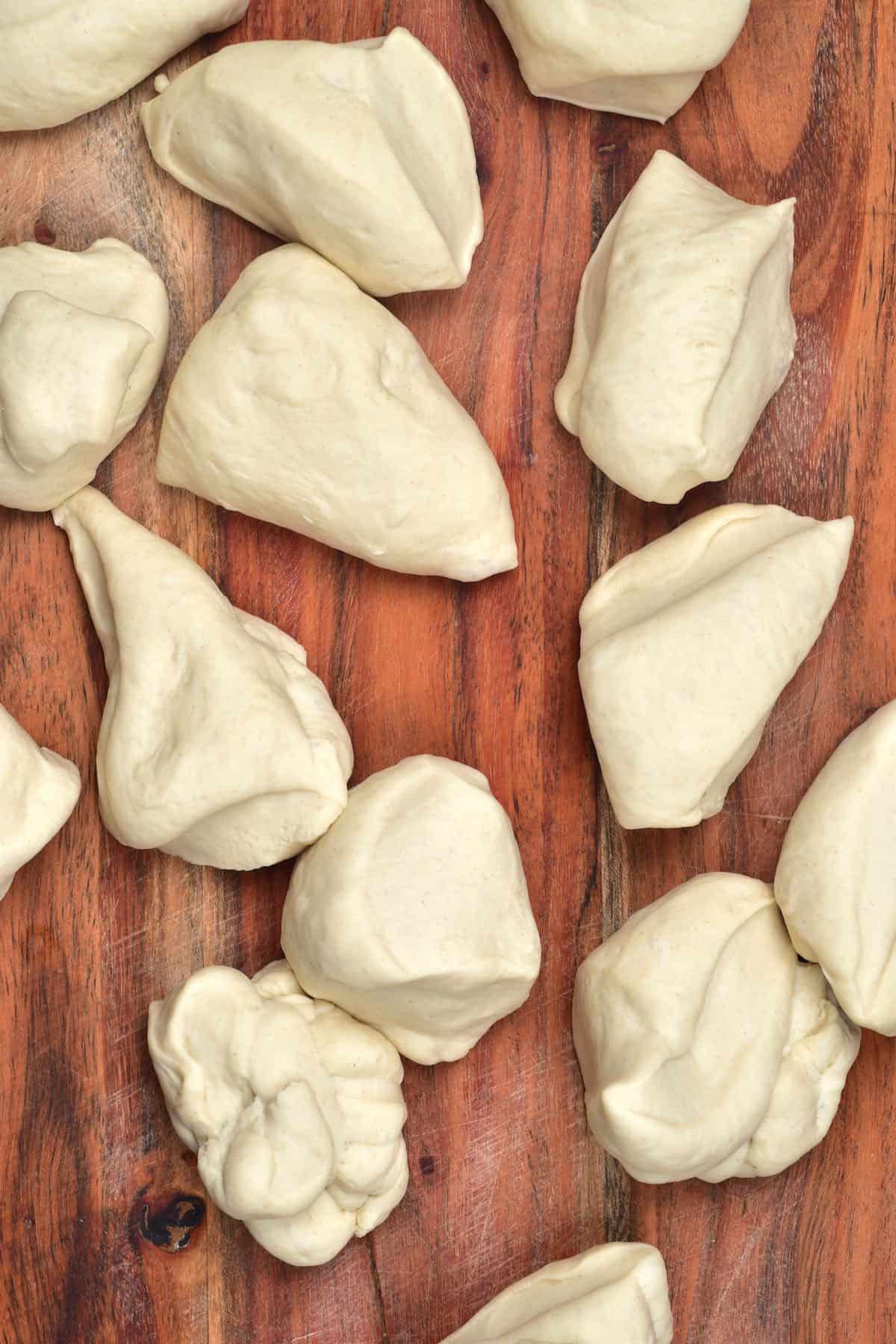
Roll each piece into equal long logs around 30 inches/80 cm in length. For each simit, you’ll need two of the dough ropes.
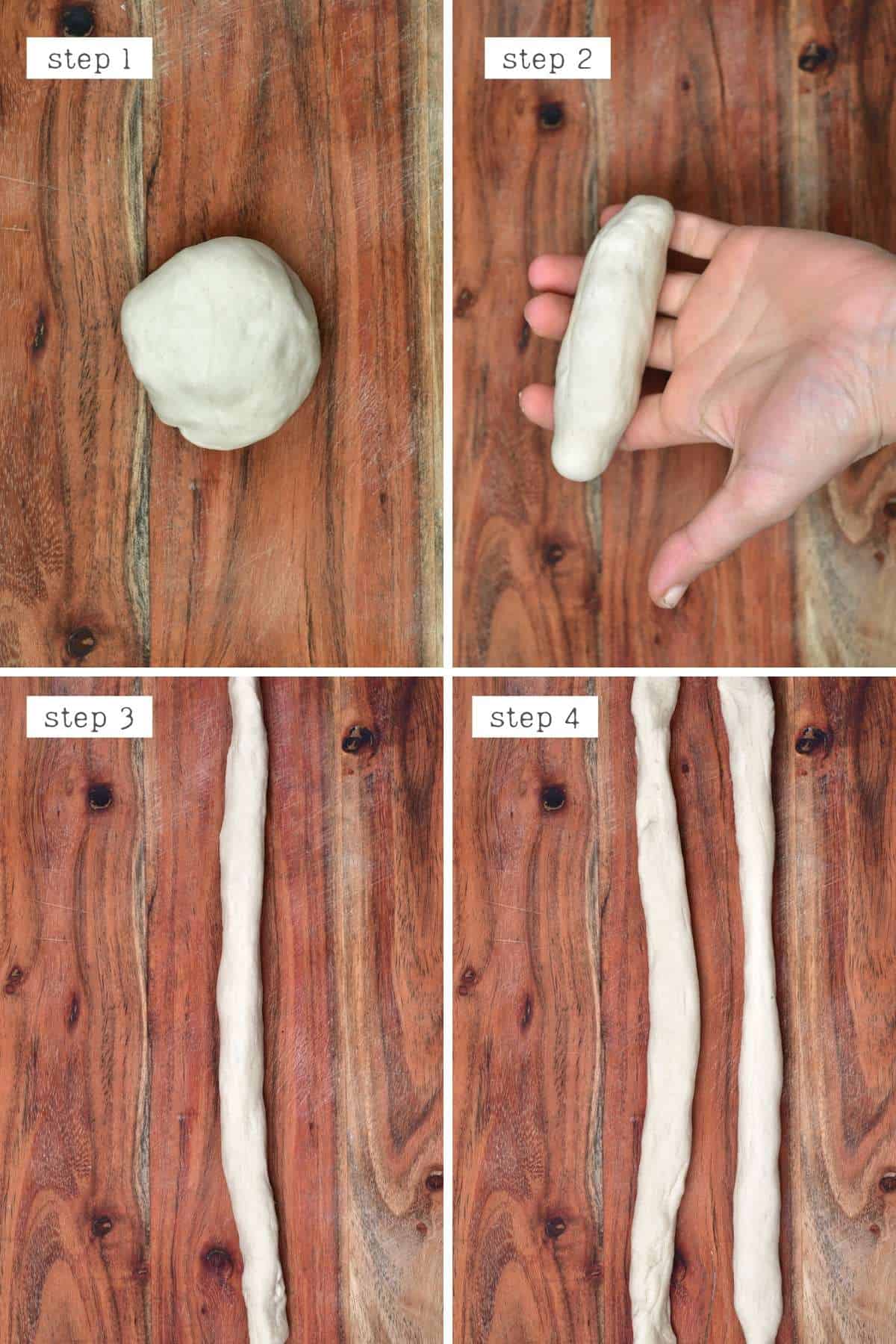
Gently press them to attach them at one end then simply twist them (like braiding) into a twisted rope. Then connect the twisted rope into a loop/ring, pressing the two ends together to seal.

Cover any prepared simit with a kitchen towel as you prepare the rest.
Step 4: Dip and cover them

Dip each simit into the molasses mixture and then into the dish of sesame seeds, making sure to coat them thoroughly (don’t be stingy if you want traditional simit!).

Step 5: Bake the simit
Transfer the prepared simit to parchment-lined baking tray/s and bake in a pre-heated oven at 475ºF/240ºC for 20-25 minutes, until golden brown.

You can, optionally, allow them to rest for a further 20-30 minutes (under a kitchen towel) before baking, to rise a little bit more for fluffier, thicker simit.

How To Make Ahead and Store
To Make Ahead: you can prepare the simit dough in advance and store it for up to 2 days, tightly wrapped in the refrigerator. Before using it, remove it from the refrigerator and allow it to come to room temperature and rise.
To Store: like most fresh bread, homemade simit is best eaten within 2-3 days (at room temp) or 3-5 days (in the refrigerator). Store in an airtight bag or container.
To Freeze: You can freeze the simit, wrapped well, for up to 2 months.
To Reheat: Place the simit back in a preheated oven at 400ºF/200ºC for a few minutes until warmed. If it’s beginning to become a bit too hard, then sprinkle with water before adding to the oven. You can also bake it from frozen for between 10-15 minutes.

How To Serve Simit
Simit (aka Turkish bagel) is a traditional addition to a Turkish breakfast spread alongside cucumber, tomatoes, olives, cheese, and some delicious Turkish tea or coffee (or Ayran – a salty yogurt drink popular in Turkey). Sweet spreads are also encouraged: jams, honey butter, a sweet tahini spread, Nutella, etc.
I like to serve mine with labneh and/or cream cheese as a snack. I’ll also often serve them instead of pita for dips like hummus, baba ganoush, muhammara, this labneh dip, yellow split pea ‘hummus’, and more!
You can also serve the simit in a similar way to a bagel, slicing in half and topping or using it as a ‘sandwich’ – usually with tomatoes and mozzarella (or vegan mozzarella).
Recipe Notes
- You can use a combination of wholewheat flour and white flour to prepare these simits too. I haven’t tried with 100% whole wheat yet as I imagine it being too dense.
- For extra sesame flavor, lightly toast the seeds in a dry pan until golden brown and aromatic before adding to the simit dough.
- Feel free to adapt the thickness of your homemade simit based on if you want them for sandwiches.
- There is a ‘poaching’ method too, where the water and sugar/molasses mixture is heated, and the twisted simit is poached for a minute. However, that’s more like American bagels, so I usually use this method of simply dipping the bagels in the sweet molasses mixture.
Other Bread Recipes
- Easy No-Knead Turkish Bread (Ramadan Pide Bread)
- Easy Cheese Flatbread (Cheese Manakish)
- Homemade New York-Style Bagels (NY Bagel Recipe)
- How To Make Soft Pretzels
- Zaatar Bread (Manakish Za’atar)
- The Best Authentic Homemade Pita Bread
- Simple Homemade Multigrain Bread Recipe
- Homemade Garlic Naan Bread (Indian Flatbread)
- 2-Ingredient Sweet Potato Flatbread (Gluten-free)
- Turmeric Rosemary No-Knead Focaccia Bread
You might also like to check out this post with 25+ breakfast ideas from around the world!
If you try this simit recipe, I’d love to hear your thoughts/questions below. Also, I’d appreciate a recipe card rating below, and feel free to tag me in your recipe recreations on Instagram @Alphafoodie!

How To Make Simit (Turkish Bagel)
Ingredients
- 4 cups flour Read notes*
- 3 tsp salt 10 gr
- 1⅓ cups lukewarm water
- 2.5 tsp dry yeast 10 gr (read notes to swap yeast type)
Topping
- 1/4 cup grape molasses check notes for alternatives
- 1/4 cup hot water
- 2 Tbsp flour
- 1/2 cup sesame seeds
Instructions
Step 1: Prepare the ingredients
- Combine the yeast with lukewarm water, mix well, and set aside for several minutes to allow the yeast to activate.
- Meanwhile prepare a large dish of sesame seeds, for dipping. In a separate bowl (big enough to lay the simit in), combine the grape molasses, water, and (optionally) flour and mix well until there are no lumps.
Step 2: Prepare the dough and rest it
- Combine the flour, salt, and yeast mixture and mix well with a spoon into a crumbly dough.
- Knead the dough for around 10 minutes, until you have a smooth elastic dough. You could also do this process in a stand mixer for a few minutes less.
- Place the dough back in a bowl (lightly oil it if preferred), cover with a kitchen towel, and set aside in a warm area to rise for an hour until it doubles in size.
Step 3: Shape the simit
- Remove the dough from the bowl, knock some air out of it and then divide the mixture into 14 equal pieces. To get these fully accurate, weigh them. Mine were 55g (~2 ounces) per piece.
- Roll each piece into equal long logs around 30 inches/80 cm in length.
- For each simit, you'll need two of the dough ropes. Gently press them to attach them at one end then simply twist them (like braiding) into a twisted rope. Then connect the twisted rope into a loop/ring, pressing the two ends together to seal.
- Cover any prepared simit with a kitchen towel as you prepare the rest.
Step 4: Dip and cover them
- Dip each simit into the molasses mixture and then the dish of sesame seeds, making sure to coat them thoroughly (don't be stingy if you want traditional simit!).
Step 5: Bake the simit
- Transfer the prepared simit to parchment-lined baking tray/s and bake in a pre-heated oven at 475ºF/240ºC for 20-25 minutes, until golden brown.
- You can, optionally, allow them to rest for a further 20-30 minutes (under a kitchen towel) before baking, to rise a little bit more for fluffier, thicker simit.
How To Make Ahead and Store
- To Make Ahead: you can prepare the simit dough in advance and store it for up to 2 days, tightly wrapped in the refrigerator. Before using it, remove it from the refrigerator and allow it to come to room temperature and rise.To Store: like most fresh bread, homemade simit is best eaten within 2-3 days (at room temp) or 3-5 days (in the refrigerator). To store the simit bread, store in an airtight bag or container.To Freeze: you can freeze the simit, wrapped well, for up to 2 months.To Reheat: place the simit back in a preheated oven at 400ºF/200ºC for a few minutes until warmed. If it's beginning to become a bit too hard, then sprinkle with water before adding to the oven. You can also bake it from frozen for between 10-15 minutes.
Notes
- Flour: To make a traditional simit, it’s important to use a high-protein flour of at-least 12% protein (look out for flour labeled ‘strong flour,’ and the % will be listed on the label) – it provides that classic ‘bagel-like’ flavor and texture. If you’re unable to find any (which is probably more likely with the current global situation), then you can use plain white flour – which is what I did for this recipe. You could also use a combination of white and wholewheat flour
- Yeast: You can use fresh, dry, or instant yeast (I used dried). If you use active dry yeast, there’s no need to activate the yeast (yay for time-saving!).
- Grape Molasses: You could alternatively use malt syrup, pekmez (available in some Turkish grocery stores). I’ve even once tried it with honey – it wasn’t the same flavor profile, but it worked. I haven’t tried it with other molasses (like pomegranate molasses or fig molasses) – as they’re not as sweet, you may want to add a little extra sugar to the dough or syrup to the molasses mixture.
Other Notes:
- You can use a combination of wholewheat flour and white flour to prepare these simits too. I haven’t tried with 100% whole wheat yet as I imagine it being too dense.
- For extra sesame flavor, lightly toast the seeds in a dry pan until golden brown and aromatic before adding to the simit dough.
- Feel free to adapt the thickness of your homemade simit based on if you want them for sandwiches.
- There is a ‘poaching’ method too, where the water and sugar/molasses mixture is heated, and the twisted simit is poached for a minute. However, that’s more like American bagels, so I usually use this method of simply dipping the bagels in the sweet molasses mixture.
Nutrition
Nutrition information is automatically calculated, so should only be used as an approximation.











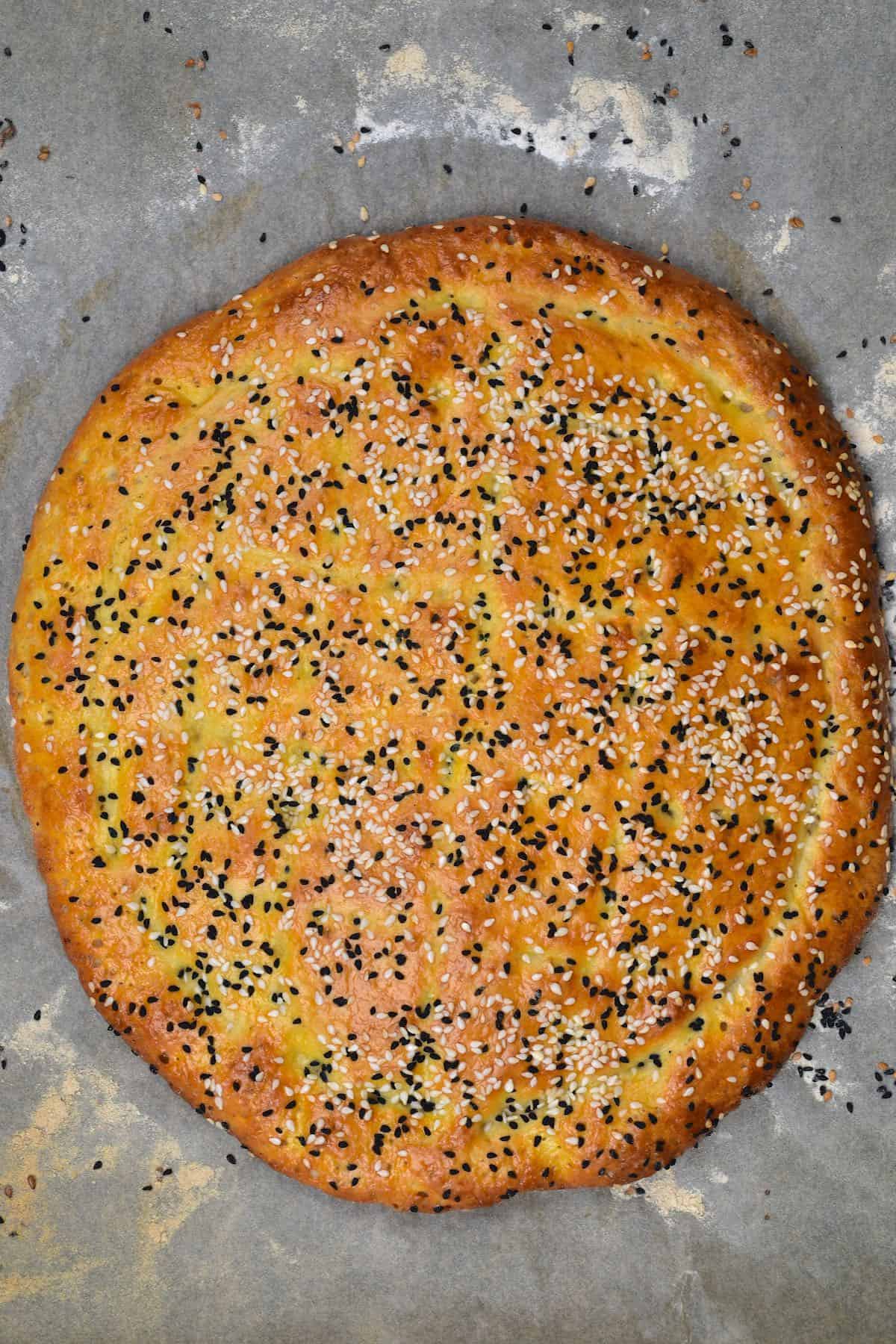











Any thoughts on trying maple syrup as a molasses sub?
Hi Kristina,
Yes, you can definitely try using maple syrup, you may need to use less water for the topping as the water content within maple syrup is quite a bit higher than molasses. Please note that it may not taste the same as it would with molasses. I hope this helps.
Good recipe! I divided mine into 12 equal pieces, so 6 simits. Turned out great. I used Sugar beet molasses. The length of each strip given at 30 inches seems a tad too long. 30 to 40 cm is more like it instead of 80.
Thank you so much for your comment and for your tips! Glad you enjoyed the recipe!
Can you substitute poppy seeds for a change?
Hi Agnes,
I’m sure you can, but it won’t taste the same as with the sesame seeds.
Hi Samira! New to baking. How long does proofing take? I used instant yeast since I had a lot of it at home and used 1/4th the mentioned amount per your notes.
Hi Suchi,
The proofing should take about 1 hour.
Hi, can I alternate sugar syrup instead of molasses?
Hi Swathi,
Yes you can, however it won’t have the same traditional taste.
I love Turkish pide and Turkish Tea.
awww me too, thank you!